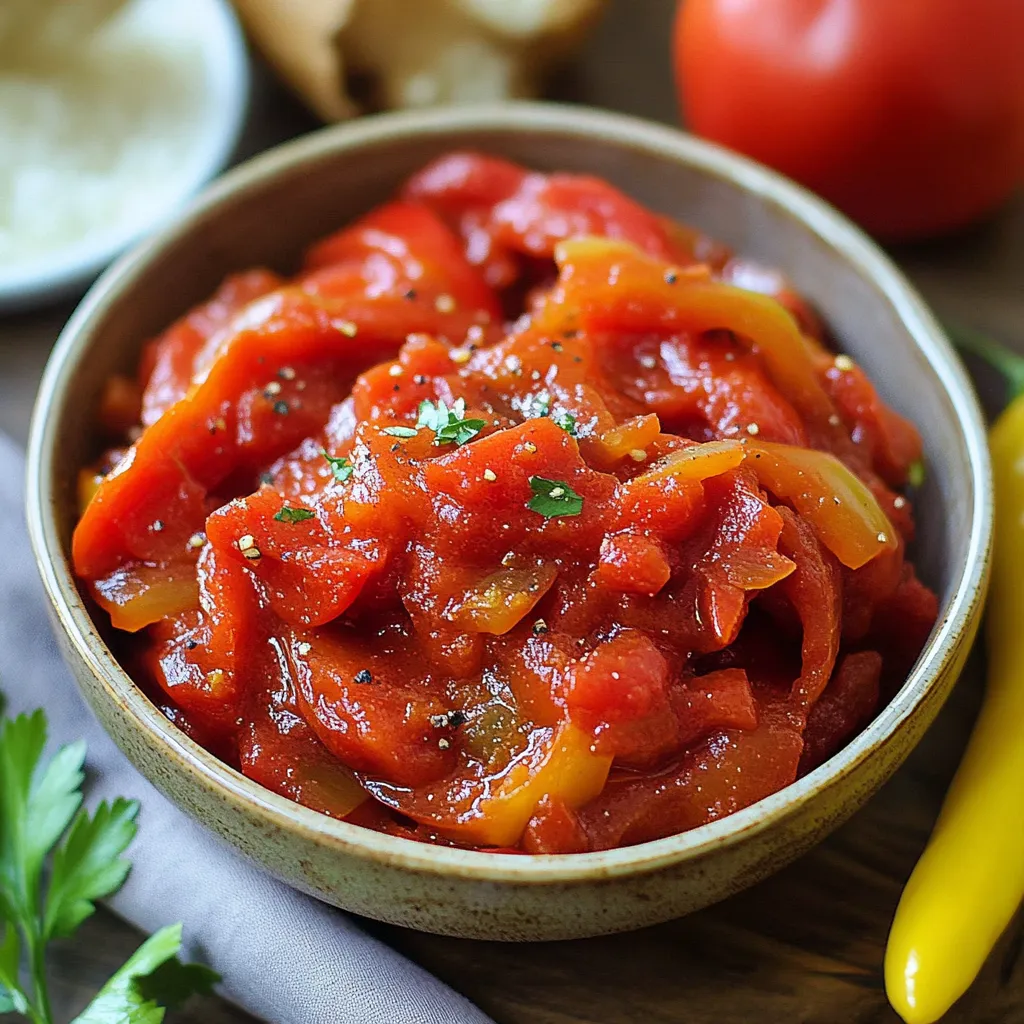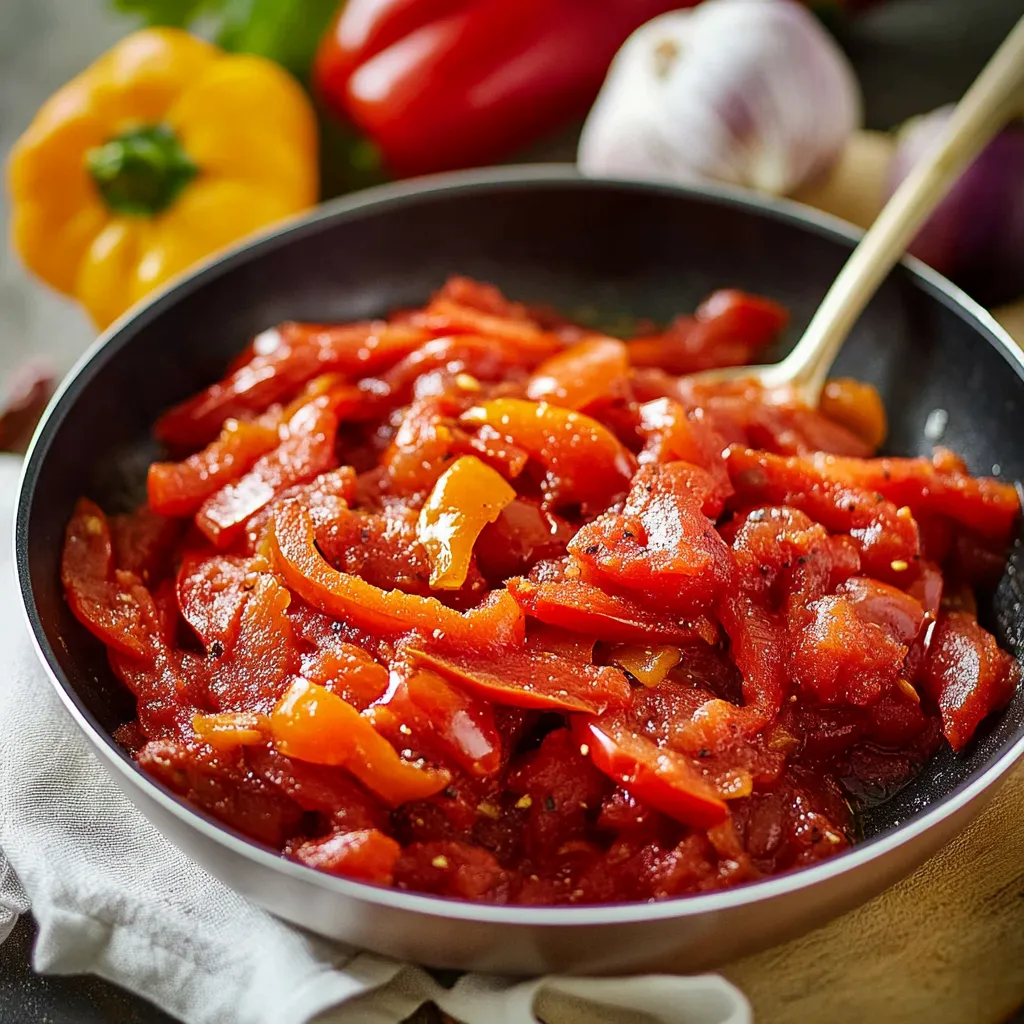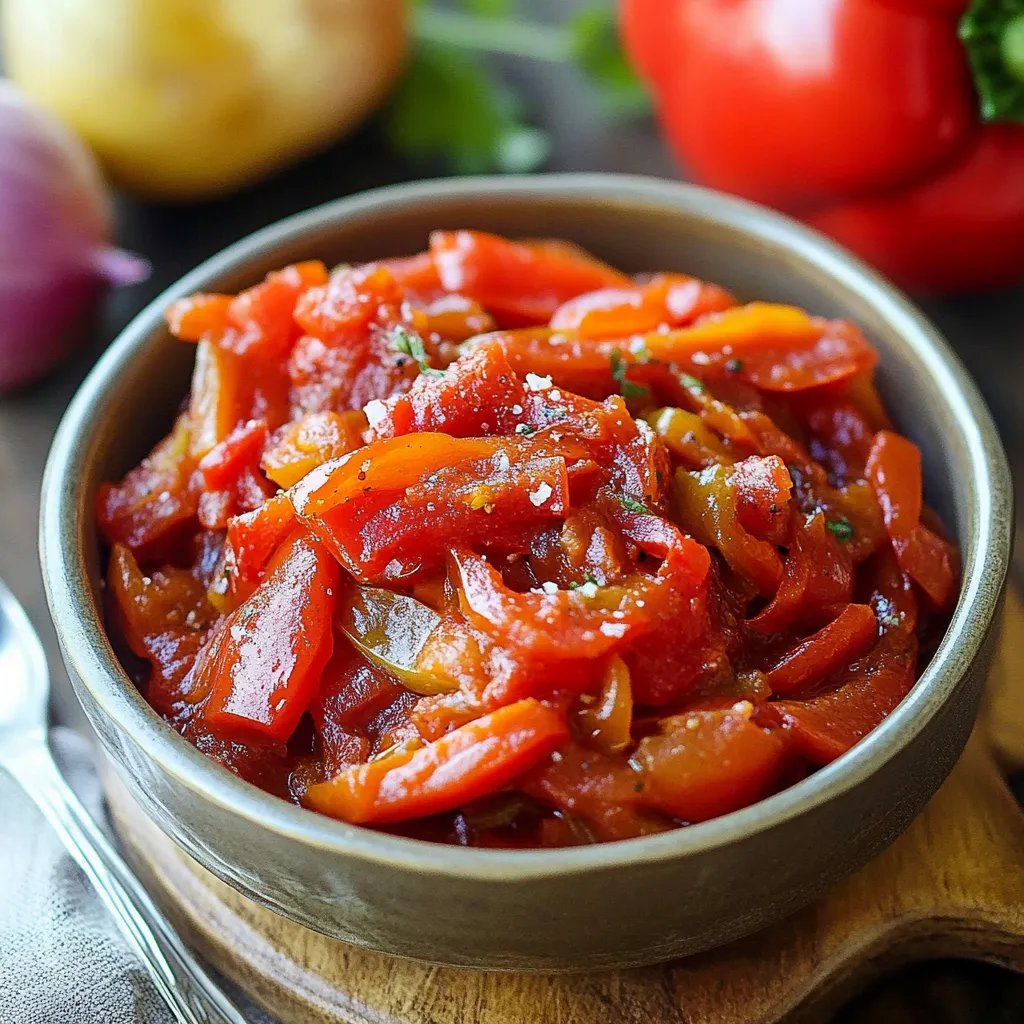 Pin it
Pin it
Italian Peperonata turns basic veggies into a tasty Mediterranean treat. The bell peppers cook slowly with onions and tomatoes until they get super soft with rich flavors. The peppers' natural sweetness works great with tangy tomatoes and garlic, making a flexible veggie dish that fits with many meals.
I bumped into peperonata during my trip to southern Italy. A small local eatery put it next to some crusty bread as a starter. The bright colors grabbed my eyes right away, but the amazing taste won my heart. Since that day, it's been my favorite thing to cook when friends come over who like simple but fancy food.
Key Ingredients
Main Components
- Bell peppers: Give a sweet, earthy taste. Go for red, orange or yellow ones for extra sweetness.
- Yellow onions: Add sweet aroma. Cut them thin so they melt down nicely.
- Fresh garlic: Brings needed kick. Chop it small to spread flavor without taking over.
- Tomato passata: Makes the smooth base. Try to find ones without extra stuff for pure tomato goodness.
Taste Boosters
- Extra virgin olive oil: Adds richness. Better quality oil means better final taste.
- White wine vinegar: Gives that zing. The tang balances out the sweetness.
- Granulated sugar: Cuts the acid. Just a tiny bit changes the whole sauce.
- Salt and pepper: Make everything pop. Kitchen salt works best as it spreads evenly.
Cooking Instructions
- Starting Strong:
- Heat good olive oil in a big, solid pan on medium. Throw in your sliced onions with a good pinch of salt, giving them a stir now and then so they don't brown. Let them cook till they're see-through and sweet, about five minutes.
- Mixing Veggies:
- Add your sliced bell peppers and chopped garlic to the soft onions. Turn the heat down a bit so nothing burns. Let it all cook together for ten minutes, stirring every so often for even cooking.
- Slow Cooking:
- Pour your tomato passata over all the veggies and mix it in well. Put a lid on the pan and turn down the heat to get a gentle bubble going. Let it cook for twenty minutes, checking it once in a while.
- Final Touch:
- Take the lid off and mix in sugar and vinegar. Let it bubble without the lid for five more minutes to get the flavors really strong. Give it a taste and add more salt and pepper if needed.
 Pin it
Pin it
When I was little, my grandma would make huge pots of peperonata in summer when her garden had tons of peppers. She always told me that letting the veggies cook slowly was the key to getting the best flavor. Even now, when I smell peppers cooking, it takes me straight back to her kitchen.
Perfect Pairings
Peperonata makes regular meals feel special. Mix it with just-cooked pasta and top with torn basil and grated pecorino for an easy dinner. Serve it with grilled sausages where the sweet-tangy veggies match the rich meat perfectly. Spoon it onto toasted sourdough with creamy burrata cheese for a fancy starter. Stack it in sandwiches with prosciutto and fresh mozzarella for amazing lunches.
Creative Adaptations
Make peperonata your own to match different tastes and diets. Throw in diced eggplant while cooking the peppers for more Mediterranean flavor. Sprinkle in red pepper flakes for some heat. Mix in capers and olives toward the end for salty depth. Add diced zucchini with the peppers for more variety. For extra protein, toss in some white beans during the last five minutes.
Leftovers Guidance
Peperonata tastes way better the next day as the flavors mix together. Keep cooled peperonata in sealed glass containers in the fridge for up to five days. Put cooled portions in freezer containers, leaving a bit of space at the top, then freeze for up to three months. Let frozen peperonata thaw in the fridge overnight before warming gently. Freshen up refrigerated leftovers with some new herbs and a drizzle of olive oil before serving.
 Pin it
Pin it
I've grown to love peperonata more and more over the years. What started as just a side dish has become one of my signature recipes. The mix of sweet peppers and tangy tomatoes creates a flexible base that works in so many meals. I find the chopping and slow cooking almost relaxing, and everyone always raves about it when I make it for family and friends.
Frequently Asked Questions
- → Can I prepare this ahead of time?
- Totally! It tastes even better the day after, as the flavors deepen. Keep it refrigerated for up to three days.
- → Which peppers are best to use?
- Red ones are your best pick for sweetness, though yellow and orange are also great. Green peppers are less sweet, so you might want to skip those.
- → What’s the best way to serve it?
- You can serve it warm or cooled. It’s great as a side, spread on bread, or with an antipasto platter.
- → Why is it taking longer to soften?
- The cooking time depends on how thick your pepper strips are and the heat you’re using. Just aim for soft and tender without overcooking.
- → Can I freeze the leftovers?
- Yes, it freezes beautifully. Toss it in a sealed container, and it’ll keep for up to three months.
